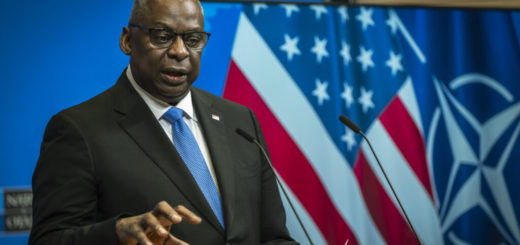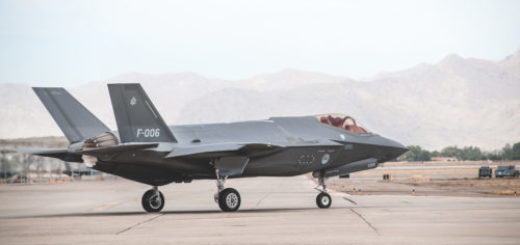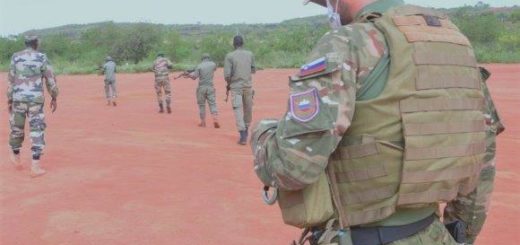China plans to order 20 Il-78MK-90A tanker aircraft from Russia by 2028
{loadposition bannertop}
{loadposition sidebarpub}
A leaked Russian industry document reportedly shows that China plans to acquire 20 Il-78MK-90A aerial refueling aircraft from Russia, with deliveries expected between 2027 and 2028.
China is reportedly negotiating the purchase of 20 Il-78MK-90A tanker aircraft from Russia, according to a leaked document cited by Piotr Butowski on October 16, 2025. The order, if confirmed, would be fulfilled between 2027 and 2028 and aims to supplement the Chinese Air Force’s limited aerial refueling fleet. The aircraft, based on the Il-76MD-90A produced at the Aviastar-SP facility in Ulyanovsk, would improve the PLAAF’s refueling capacity while the production of the YY-20 tanker continues to scale up.Follow Army Recognition on Google News at this link
Powered by four PS-90A-76 turbofan engines, the Il-78MK-90A reaches a top speed of 800 kilometers per hour, a refueling speed between 450 and 600 kilometers per hour, and a total fuel transfer capacity of 78 tons at a distance of 1,000 kilometers. (Picture source: Rosoboronexport)
According to the leaked file, China, identified as customer 156, is considering ordering 20 Il-78MK-90A aerial refueling aircraft from Russia, with deliveries scheduled between 2027 and 2028. This potential contract would considerably expand China’s aerial refueling capacity and enhance the operational range of its combat and strategic aircraft. The Il-78MK-90A, a modernized version of the Il-78 family, is capable of simultaneously refueling one heavy aircraft or two tactical aircraft in flight and up to four aircraft on the ground. Apart from its refueling role, the aircraft can be reconfigured in a few hours into a transport version for carrying cargo, vehicles, and paratroopers. Its maximum takeoff weight reaches 210,000 kilograms, and it can take off and land on both paved and unpaved airfields, a feature that allows flexible basing options. The Il-78MK-90A is designed to support sustained operations over long distances, a capacity particularly relevant for China’s future long-range air missions.
The Chinese People’s Liberation Army Air Force (PLAAF) currently faces a notable shortage of large, modern aerial refueling aircraft as it transitions from its aging H-6U and Il-76 tankers to the newer YY-20 (Y-20U/YU-20) models, which are derived from the Y-20 heavy transport platform. The current tanker fleet remains limited, including only a small number of converted Y-20s and a few Il-78 aircraft acquired from Ukraine between 2014 and 2016, which use UPAZ-1 refueling pods. To achieve sustained operations beyond the first island chain and expand its reach across the South China Sea, the Taiwan Strait, and the western Pacific, China needs to increase its tanker force to several dozen aircraft.
Although production of Y-20-based tankers is accelerating and progressively replacing older H-6U and Il-76 models, the PLAAF continues to require additional heavy refuelers to support the long-range missions of aircraft such as the J-16, J-20, J-35, and H-6K. Therefore, the acquisition of 20 Russian Il-78MK-90A tankers would provide a significant interim boost to China’s aerial refueling capacity, bridging the gap until YY-20 production reaches sufficient numbers, as the latter can reportedly carry up to about 90 tons of fuel, enough to refuel several fighters per sortie and extend operational endurance far beyond earlier aircraft.
The Il-78MK-90A is built on the Il-76MD-90A platform and developed by Ilyushin, part of the United Aircraft Corporation, with production conducted at the Aviastar-SP facility in Ulyanovsk. The first prototype completed its maiden flight on January 25, 2018, under the control of test pilot Nikolai Kuimov. It is powered by four PS-90A-76 turbofan engines, which provide increased thrust and a lower specific fuel consumption compared to the earlier D-30KP engines. The engines also comply with ICAO Chapter 4 noise and emission regulations. These upgrades enable a greater range and fuel transfer capacity while improving reliability and operational flexibility. The Il-78MK-90A possesses a maximum speed of 800 kilometers per hour, a refueling speed between 450 and 600 kilometers per hour, and a total fuel transfer capacity of 78 tons at a distance of 1,000 kilometers. The maximum payload in its transport configuration is 60,000 kilograms, with a range of approximately 4,000 kilometers when carrying that load.
The aircraft’s refueling equipment consists of three UPAZ-1M refueling pods, two mounted under the wings and one at the tail. Each pod can transfer up to 2,500 liters of fuel per minute, while the improved UPAZ-1M configuration increases this capacity to 3,000 liters per minute using a TNA-150M turbopump assembly with a more powerful turbine. The refueling system includes a new digital control block known as the BAI (Automation and Information Unit), which allows the refueling parameters to be adjusted automatically through software reprogramming. The BAI provides digital data exchange with the aircraft’s systems, enabling detailed recording of operational parameters and enhancing refueling precision and safety. Supporting subsystems include an electric pump station, angular displacement sensors, and the SOP-62 fire alarm system. This configuration allows for simultaneous refueling of two fighter-class aircraft or one large bomber in flight, and the same system can be used for ground-based refueling of multiple aircraft.
The Il-78MK-90A introduces a completely updated flight deck featuring a digital “glass cockpit” with eight multifunctional LCD displays and three integrated control panels. The navigation and flight control suite is built around the Kupol-III-76M digital system, which automates flight management and reduces pilot workload. The aircraft’s systems are designed for all-weather operation, day and night, under both simple and complex meteorological conditions. The Il-78MK-90A’s internal structure allows installation of additional fuel tanks inside the cargo hold, raising total stowed fuel to approximately 109,500 liters. When required, the aircraft can be equipped for secondary roles such as aerial firefighting, given its modular internal layout. Its construction allows fast role changes within several hours, permitting transitions between tanker, transport, and auxiliary configurations in the field without specialized facilities.
The Il-78MK-90A can transport personnel in addition to its refueling role. It accommodates 145 soldiers in a two-deck configuration or up to 225 in a single-deck configuration. This dual-purpose capability reflects its conversion from the Il-76MD-90A heavy transport aircraft, allowing efficient use of existing airframe and logistics systems. The flight range of the Il-78MK-90A reaches 7,300 kilometers, and the operational ceiling is approximately 12,100 meters. Its structural design includes a wingspan of 50.5 meters, a fuselage length of 46.6 meters, and an overall height of 14.16 meters, with a wing surface area of 300 square meters. Empty weight is around 98,000 kilograms. When configured as a transport aircraft, it can carry up to 52 tons of cargo, but the maximum payload increases to 60 tons under favorable conditions. These parameters demonstrate the aircraft’s capacity to sustain long-duration missions while serving as a refueling or transport platform as operational needs dictate.
The first Il-78M-90A prototype was built as part of a development contract with the Russian Ministry of Defense to create a new-generation tanker based on the Il-76MD-90A airframe. It was the first tanker fully produced in Russia since the Soviet era, following the transfer of earlier Il-78 production to Uzbekistan. The program introduced digital production methods across the entire development cycle, from design documentation to manufacturing. The final assembly line at Ulyanovsk’s Aviastar-SP plant includes automated alignment stations and laser-optical measurement systems to ensure precise fuselage assembly. The modernization process significantly reduced labor intensity and improved quality control during production. The Russian Ministry of Defense signed a contract in December 2020 for the delivery of ten Il-78M-90A aircraft, and serial production continues to expand. According to reports, Russia’s total requirement for such tankers could exceed 20 units, positioning the Il-78M-90A and its export variant as key assets for long-range aviation.
Written by Jérôme Brahy
Jérôme Brahy is a defense analyst and documentalist at Army Recognition. He specializes in naval modernization, aviation, drones, armored vehicles, and artillery, with a focus on strategic developments in the United States, China, Ukraine, Russia, Türkiye, and Belgium. His analyses go beyond the facts, providing context, identifying key actors, and explaining why defense news matters on a global scale.

{loadposition bannertop}
{loadposition sidebarpub}
A leaked Russian industry document reportedly shows that China plans to acquire 20 Il-78MK-90A aerial refueling aircraft from Russia, with deliveries expected between 2027 and 2028.
China is reportedly negotiating the purchase of 20 Il-78MK-90A tanker aircraft from Russia, according to a leaked document cited by Piotr Butowski on October 16, 2025. The order, if confirmed, would be fulfilled between 2027 and 2028 and aims to supplement the Chinese Air Force’s limited aerial refueling fleet. The aircraft, based on the Il-76MD-90A produced at the Aviastar-SP facility in Ulyanovsk, would improve the PLAAF’s refueling capacity while the production of the YY-20 tanker continues to scale up.
Follow Army Recognition on Google News at this link
Powered by four PS-90A-76 turbofan engines, the Il-78MK-90A reaches a top speed of 800 kilometers per hour, a refueling speed between 450 and 600 kilometers per hour, and a total fuel transfer capacity of 78 tons at a distance of 1,000 kilometers. (Picture source: Rosoboronexport)
According to the leaked file, China, identified as customer 156, is considering ordering 20 Il-78MK-90A aerial refueling aircraft from Russia, with deliveries scheduled between 2027 and 2028. This potential contract would considerably expand China’s aerial refueling capacity and enhance the operational range of its combat and strategic aircraft. The Il-78MK-90A, a modernized version of the Il-78 family, is capable of simultaneously refueling one heavy aircraft or two tactical aircraft in flight and up to four aircraft on the ground. Apart from its refueling role, the aircraft can be reconfigured in a few hours into a transport version for carrying cargo, vehicles, and paratroopers. Its maximum takeoff weight reaches 210,000 kilograms, and it can take off and land on both paved and unpaved airfields, a feature that allows flexible basing options. The Il-78MK-90A is designed to support sustained operations over long distances, a capacity particularly relevant for China’s future long-range air missions.
The Chinese People’s Liberation Army Air Force (PLAAF) currently faces a notable shortage of large, modern aerial refueling aircraft as it transitions from its aging H-6U and Il-76 tankers to the newer YY-20 (Y-20U/YU-20) models, which are derived from the Y-20 heavy transport platform. The current tanker fleet remains limited, including only a small number of converted Y-20s and a few Il-78 aircraft acquired from Ukraine between 2014 and 2016, which use UPAZ-1 refueling pods. To achieve sustained operations beyond the first island chain and expand its reach across the South China Sea, the Taiwan Strait, and the western Pacific, China needs to increase its tanker force to several dozen aircraft.
Although production of Y-20-based tankers is accelerating and progressively replacing older H-6U and Il-76 models, the PLAAF continues to require additional heavy refuelers to support the long-range missions of aircraft such as the J-16, J-20, J-35, and H-6K. Therefore, the acquisition of 20 Russian Il-78MK-90A tankers would provide a significant interim boost to China’s aerial refueling capacity, bridging the gap until YY-20 production reaches sufficient numbers, as the latter can reportedly carry up to about 90 tons of fuel, enough to refuel several fighters per sortie and extend operational endurance far beyond earlier aircraft.
The Il-78MK-90A is built on the Il-76MD-90A platform and developed by Ilyushin, part of the United Aircraft Corporation, with production conducted at the Aviastar-SP facility in Ulyanovsk. The first prototype completed its maiden flight on January 25, 2018, under the control of test pilot Nikolai Kuimov. It is powered by four PS-90A-76 turbofan engines, which provide increased thrust and a lower specific fuel consumption compared to the earlier D-30KP engines. The engines also comply with ICAO Chapter 4 noise and emission regulations. These upgrades enable a greater range and fuel transfer capacity while improving reliability and operational flexibility. The Il-78MK-90A possesses a maximum speed of 800 kilometers per hour, a refueling speed between 450 and 600 kilometers per hour, and a total fuel transfer capacity of 78 tons at a distance of 1,000 kilometers. The maximum payload in its transport configuration is 60,000 kilograms, with a range of approximately 4,000 kilometers when carrying that load.
The aircraft’s refueling equipment consists of three UPAZ-1M refueling pods, two mounted under the wings and one at the tail. Each pod can transfer up to 2,500 liters of fuel per minute, while the improved UPAZ-1M configuration increases this capacity to 3,000 liters per minute using a TNA-150M turbopump assembly with a more powerful turbine. The refueling system includes a new digital control block known as the BAI (Automation and Information Unit), which allows the refueling parameters to be adjusted automatically through software reprogramming. The BAI provides digital data exchange with the aircraft’s systems, enabling detailed recording of operational parameters and enhancing refueling precision and safety. Supporting subsystems include an electric pump station, angular displacement sensors, and the SOP-62 fire alarm system. This configuration allows for simultaneous refueling of two fighter-class aircraft or one large bomber in flight, and the same system can be used for ground-based refueling of multiple aircraft.
The Il-78MK-90A introduces a completely updated flight deck featuring a digital “glass cockpit” with eight multifunctional LCD displays and three integrated control panels. The navigation and flight control suite is built around the Kupol-III-76M digital system, which automates flight management and reduces pilot workload. The aircraft’s systems are designed for all-weather operation, day and night, under both simple and complex meteorological conditions. The Il-78MK-90A’s internal structure allows installation of additional fuel tanks inside the cargo hold, raising total stowed fuel to approximately 109,500 liters. When required, the aircraft can be equipped for secondary roles such as aerial firefighting, given its modular internal layout. Its construction allows fast role changes within several hours, permitting transitions between tanker, transport, and auxiliary configurations in the field without specialized facilities.
The Il-78MK-90A can transport personnel in addition to its refueling role. It accommodates 145 soldiers in a two-deck configuration or up to 225 in a single-deck configuration. This dual-purpose capability reflects its conversion from the Il-76MD-90A heavy transport aircraft, allowing efficient use of existing airframe and logistics systems. The flight range of the Il-78MK-90A reaches 7,300 kilometers, and the operational ceiling is approximately 12,100 meters. Its structural design includes a wingspan of 50.5 meters, a fuselage length of 46.6 meters, and an overall height of 14.16 meters, with a wing surface area of 300 square meters. Empty weight is around 98,000 kilograms. When configured as a transport aircraft, it can carry up to 52 tons of cargo, but the maximum payload increases to 60 tons under favorable conditions. These parameters demonstrate the aircraft’s capacity to sustain long-duration missions while serving as a refueling or transport platform as operational needs dictate.
The first Il-78M-90A prototype was built as part of a development contract with the Russian Ministry of Defense to create a new-generation tanker based on the Il-76MD-90A airframe. It was the first tanker fully produced in Russia since the Soviet era, following the transfer of earlier Il-78 production to Uzbekistan. The program introduced digital production methods across the entire development cycle, from design documentation to manufacturing. The final assembly line at Ulyanovsk’s Aviastar-SP plant includes automated alignment stations and laser-optical measurement systems to ensure precise fuselage assembly. The modernization process significantly reduced labor intensity and improved quality control during production. The Russian Ministry of Defense signed a contract in December 2020 for the delivery of ten Il-78M-90A aircraft, and serial production continues to expand. According to reports, Russia’s total requirement for such tankers could exceed 20 units, positioning the Il-78M-90A and its export variant as key assets for long-range aviation.
Written by Jérôme Brahy
Jérôme Brahy is a defense analyst and documentalist at Army Recognition. He specializes in naval modernization, aviation, drones, armored vehicles, and artillery, with a focus on strategic developments in the United States, China, Ukraine, Russia, Türkiye, and Belgium. His analyses go beyond the facts, providing context, identifying key actors, and explaining why defense news matters on a global scale.







